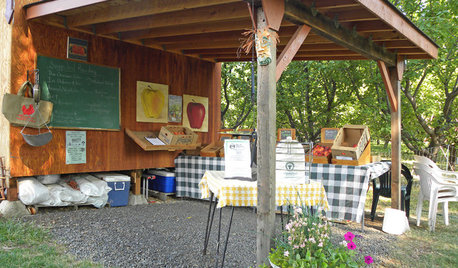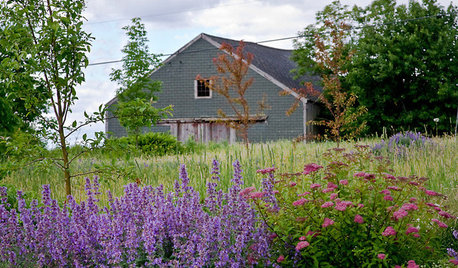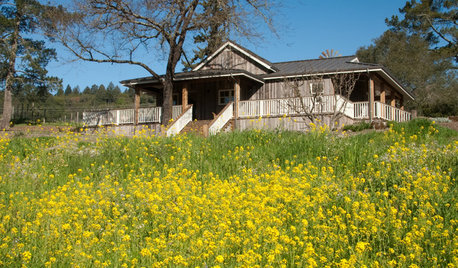Apple Orchard
scs3drg
9 years ago
Related Stories

COLORApple Accents: Color from the Orchard Comes Home
Cheerful reds and crisp greens inspire everything from centerpieces to bedscapes
Full Story
EDIBLE GARDENSHow to Add an Apple Tree to Your Edible Garden
Readily available, beautiful and fragrant, apple trees offer four-season interest along with crisp, juicy fruit
Full Story
HOUZZ TOURSMy Houzz: The Orchard and the Life-Changing Decision
Toxins give way to pure, wholesome produce and passionately green living in this home and orchard in Eastern Oregon
Full Story
VINTAGE STYLEFlea Market Find: Apple Crates
If life gives you apples, reuse the vintage crates they came in to decorate your home
Full Story
GARDENING AND LANDSCAPINGCrazy for Fruit Trees
Whether a single citrus or a mini apple orchard, even the smallest landscape space can bear deliriously delicious fruit
Full Story
GARDENING AND LANDSCAPINGLandscape Tour: Two Acres of Rural Hillside in Maine
An orchard of crab apples, a grove of sugar maples, even a hayfield ... pastoral landscape beauty doesn't get more idyllic than this
Full Story
EDIBLE GARDENSHow to Grow 10 Favorite Fruit Trees at Home
Plant a mini orchard in fall, winter or early spring to enjoy fresh-off-the-tree fruit the following year
Full Story
DECORATING GUIDESWarm Up Your Room With a Farmhouse Find
Milking stools, orchard ladders and farm tables add a rustic touch to contemporary, industrial and midcentury spaces
Full Story
RUSTIC STYLEHouzz Tour: Farm Style Suits a Vineyard's Rolling Hills
Reclaimed barn wood, a restored windmill and orchard trees make this cottage in Sonoma Valley an idyllic weekend getaway
Full Story
HOUZZ TOURSHouzz Tour: Modern and Traditional Tango in a Spanish-Style Ranch
From leaky and drab to revamped and fab, this Southern California home with its own orchard is more than ready for guests
Full Story






Scott F Smith
curtis
Related Professionals
Birmingham Landscape Architects & Landscape Designers · Garden City Landscape Architects & Landscape Designers · Brooklyn Center Landscape Architects & Landscape Designers · Medford Landscape Contractors · Surprise Landscape Contractors · Darien Landscape Contractors · Dunwoody Landscape Contractors · Inglewood Landscape Contractors · Lake Zurich Landscape Contractors · Lexington Landscape Contractors · Lynwood Landscape Contractors · McLean Landscape Contractors · Paramus Landscape Contractors · Chicago Ridge Landscape Contractors · Kingsburg Landscape Contractorsalan haigh
Scott F Smith
alan haigh
agrocoders
alan haigh
bob_z6
alan haigh
Scott F Smith
bob_z6